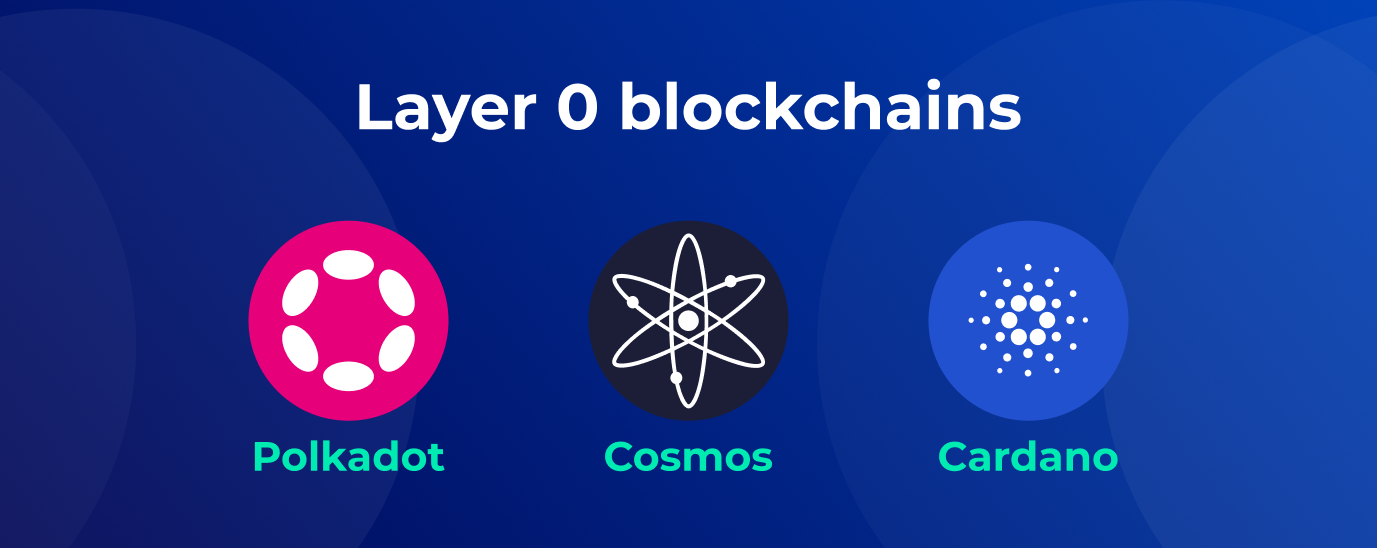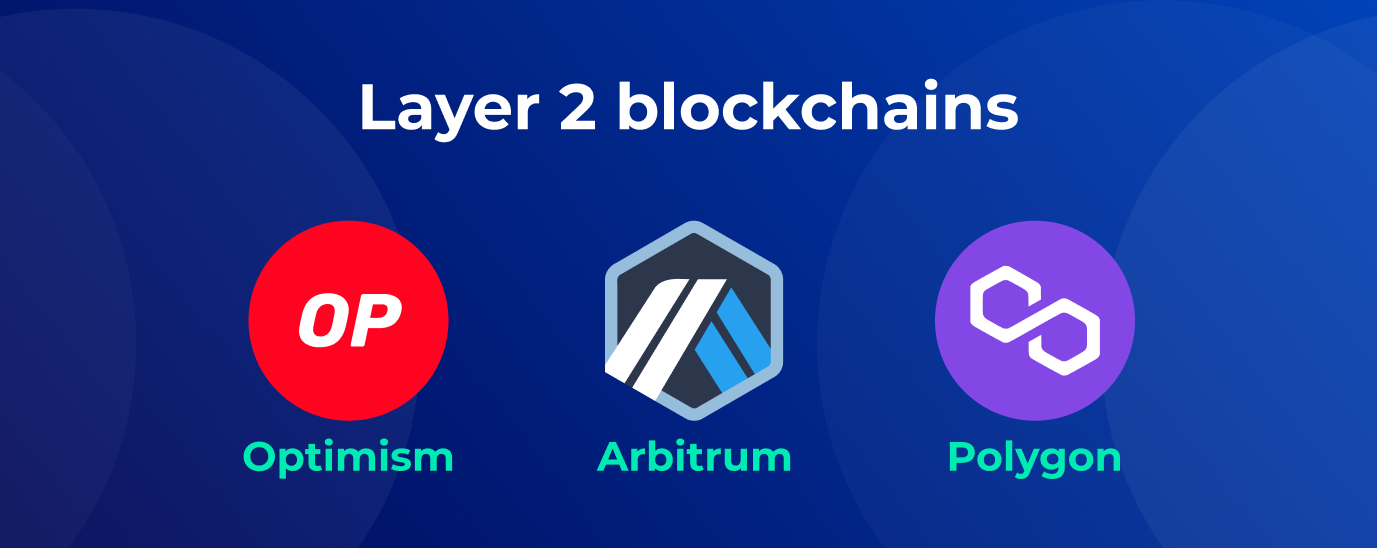Blockchain technology is well-known for its security and decentralized nature. But despite its popularity, many people still don’t have a good understanding of how it actually functions.
Blockchain is, in essence, a distributed ledger that keeps track records transactions. It uses a layered architecture that breaks the complex system into more manageable parts, each responsible for specific functions and interactions.
These blockchain parts are commonly referred to as Layer 0, Layer 1, Layer 2, and Layer 3. Understanding the different layers of a blockchain is essential for anyone looking to work with cryptocurrencies.
So, that’s what we’re going to cover in this article. Let’s begin with the basics. 👇
What is Blockchain?
Blockchain is a distributed ledger – a digital database shared by a network of connected computers, called nodes. Blockchain’s main goal is to record all transactions on the network – securely and accurately.
What makes blockchain different from other digital databases, is that it can guarantee the security and correctness of all the data recorded on it. This removes the need for having a single trusted party to control and verify transactions.
Bitcoin was the first blockchain platform that was put in practice, making it the most popular blockchain as of yet. Since its creation, other blockchains have appeared, such as Ethereum, Tron or Ripple.
Blockchains have many practical uses, which include:
- Cryptocurrencies
- DeFi applications
- Non-fungible tokens (NFTs)
- Smart contracts
What are Blockchain Layers?
Blockchain layers refer to the different components of a blockchain system that work together to ensure the security and scalability of the technology. Blockchains are decentralized and lack a central authority, so they use a distributed ledger system to authenticate transactions through a consensus reached by numerous nodes in the network. The layered architecture of blockchains clusters different functions together to provide security and scalability.
As the number of users on the blockchain grows, the layers ensure that the system can handle the increased demand while maintaining top-notch security. By understanding the different layers of a blockchain, we can gain a deeper appreciation for the technology and its potential applications.
The Layered Architecture of Blockchain
Blockchain’s layered structure consists of a dispersed network where each participant maintains, approves, and updates new entries in a specific sequence.
The blockchain architecture layers are made up of blocks that contain a list of transactions. These layers can be categorized as public, private, or consortium-based:
- In a public blockchain, anyone can participate in the network.
- In a private blockchain, only a specific group of participants have access.
- A consortium-based blockchain is a hybrid between public and private, where a select group of participants has permission to join the network.
The layered structure of blockchain allows for secure and decentralized transactions while accommodating different levels of access and control.
Layers of blockchain architecture consist of the following five levels:
1. Hardware Infrastructure Layer
At the hardware infrastructure layer, blockchain handles data storage on individual nodes or a server at a data center. Unlike a client-server architecture, a blockchain is a peer-to-peer network where clients communicate directly, and all data is stored in a distributed database.
2. Data Layer
The data layer is the heart of the blockchain, consisting of an ordered linked list of blocks that store transactions. Blockchain records and signs transactions digitally to ensure data security and integrity. The digital signature also verifies the sender’s identity and prevents tampering with the data.
3. Network Layer
The network layer is responsible for inter-node communication and ensures that nodes can connect, communicate, share, and synchronize to maintain the blockchain’s integrity. It manages block propagation, transactions, and discovery.
4. Consensus Layer
The consensus layer is the most critical layer of a blockchain, ensuring that transactions are validated, ordered, and agreed upon by all nodes in the network. It establishes a clear set of agreements between nodes that follow the rules to validate transactions and create blocks.
5. Application Layer
The application layer consists of decentralized applications, smart contracts, and chain code that interact with the blockchain network through APIs. The execution layer comprises chain code, smart contracts, and the underlying logic that execute commands and maintain the blockchain’s determinism.
Blockchain Layers in Crypto Terms
The categories used above are used to describe the underlying architecture of blockchain networks in general.
However, people in the industry use a different set of terms to describe how blockchain protocols function. These are more often used and may be familiar even to people outside of the blockchain realm.
Importantly, these terms are used to describe two different things:
- Layers of blockchain architecture, like the ones we described above
- Different blockchains belonging to some logical group
This discrepancy can cause confusion, especially among newbie crypto enthusiasts. So let’s look at each of the blockchain layers, from 0 to 3, and understand what they actually mean. 👇
Layer 0
Layer 0 refers to the underlying technology that enables the blockchain network to operate, such as the internet, hardware, and connections. It is the backbone of blockchain and is essential to its creation and core function.

When used to describe blockchains, Layer 0 generally refers to “networks of blockchains”. This includes protocols facilitating cross-chain operability, such as Polkadot or Avalanche.
Layer 0 blockchain examples
Examples of Layer 0 blockchains include:
Layer 1
Layer 1 is the fundamental layer of the blockchain network responsible for the consensus process, programming languages, block duration, dispute resolution, and guidelines that ensure the network’s basic functionality. Layer 1 is crucial to the security of the blockchain network, and its immutability ensures that the network is tamper-proof.

Bitcoin and Ethereum are known as Layer 1 blockchains – these are independent decentralized networks that operate & execute transactions without any assistance from the outside. Layer 1 blockchains serve as a base layer for Layer 2 and Layer 3 solutions to be built on top of.
Layer 1 blockchain examples
Many popular blockchains are considered Layer 1, for example:
Layer 2
Layer 2 is an overlapping network positioned above the base layer. It includes third-party integrations that work with layer 1 to increase the number of nodes and the system throughput.

L2 solutions include state channels, sidechains, and rollups.
State channels enable two-way communication between a blockchain and off-chain transactional channels, increasing overall transaction volume and speed.
Sidechains are separate transactional chains that work with the blockchain and are used for many transactions.
Rollups are scaling options that enable transactions outside the layer 1 network, with resulting data uploaded to the layer 2 blockchain.
Layer 1 blockchain examples
Layer 2 blockchains help to overcome limitations of the underlying blockchains. Examples of these include:
- Optimism (Ethereum-based)
- Arbitrum (Ethereum-based)
- Polygon (Ethereum-based)
- Lightning Network (Bitcoin-based)
Layer 3
Layer 3, commonly referred to as L3, is the application layer. It serves as the user interface, hiding the technical details of the communication channel. L3 apps give blockchain practical utility, enabling users to interact with the blockchain network through application programming interfaces, frameworks, scripts, and user interfaces.

Layer 3 protocols are unique solutions built on top of layer 2 networks, helping address interoperability issues present in most blockchains.
Layer 3 blockchain examples
Some notable examples of L3 blockchains include
- Interledger Protocol (used by Ripple)
- ICON
- Quant
- IBC Protocol (used by Cosmos)
The Takeaway
To sum everything up, the blockchain infrastructure consists of 5 layers:
- The hardware infrastructure layer is the foundation of blockchain technology, comprising the physical devices that power the network.
- The data layer is responsible for storing and retrieving information.
- The network layer facilitates communication between nodes on the blockchain.
- The consensus layer ensures that all nodes on the network agree on the current state of the blockchain.
- The application layer provides an interface for users to interact with the blockchain.
In addition, another classification is used by the crypto community to describe the same architectural layers, and it goes as follows:
- Layer 0 – includes hardware and data layer
- Layer 1 – contains network consensus layer
- Layer 2 – Represents networks built on top of existing blockchains helping to solve their underlying issues
- Layer 3 – Is the application layer, hosting applications for users to interact with.
And finally, Layer 0 – 3 refer to blockchains based on their characteristics. For example:
- L0: Polkadot, Avalanche, Cardano – cross-chain operability protocols
- L1: Bitcoin, Ethereum, Solana – base layer blockchain networks
- L2: Optimism, Polygon, Arbitrub – scaling solutions built on top of underlying networks
- L3: Icon, Quant, IBC Protocol – Application layer solutions built on top of Layer 2 networks & offering specific solutions to some problems.
We hope that this article has helped clarify some inconsistency & peculiarities of blockchain-related naming conventions. We also believe it is important to be familiar with the technology even if you don’t use it directly, as a blockchain developer would. It is also crucial to be familiar with the underlying tech of projects you may want to invest in.
PS.
If you are thinking about investing into cryptocurrencies, we recommend you check out Guardarian. With us you can buy over 1000 different cryptocurrencies super fast and super cheap right here!
Or follow these simple steps to get your crypto:
- Go to www.guardarian.com.
- Choose what you want to buy & how you want to pay.
- Specify your wallet address.
- Complete a fast & intuitive checkout process.
- Check your wallet & we hope to see you soon!
Simply choose what you want to buy & how you want to pay and your funds will reach your wallet in no time!
No registration, no hidden fees and no long waits – only on Guardarian!




